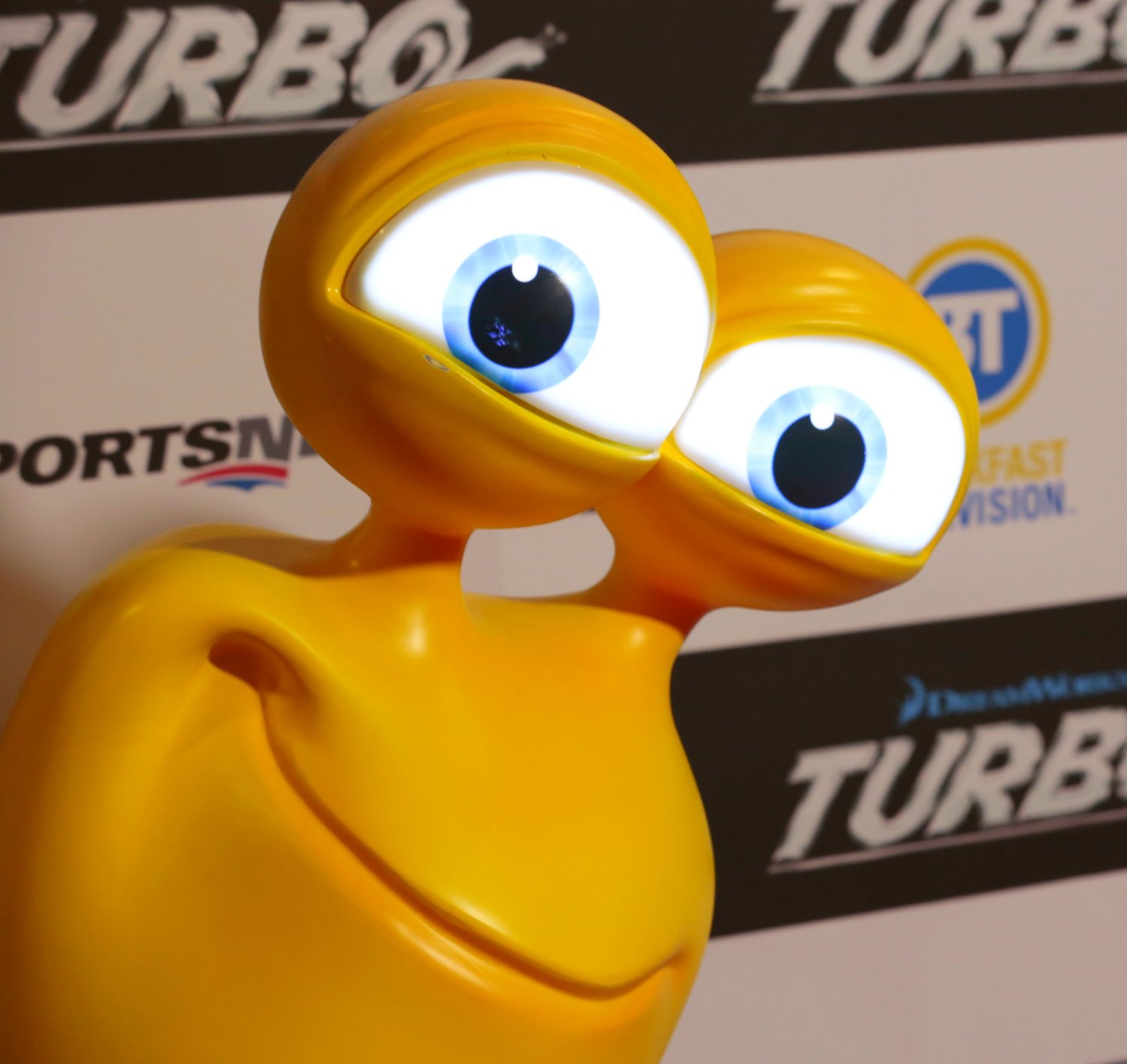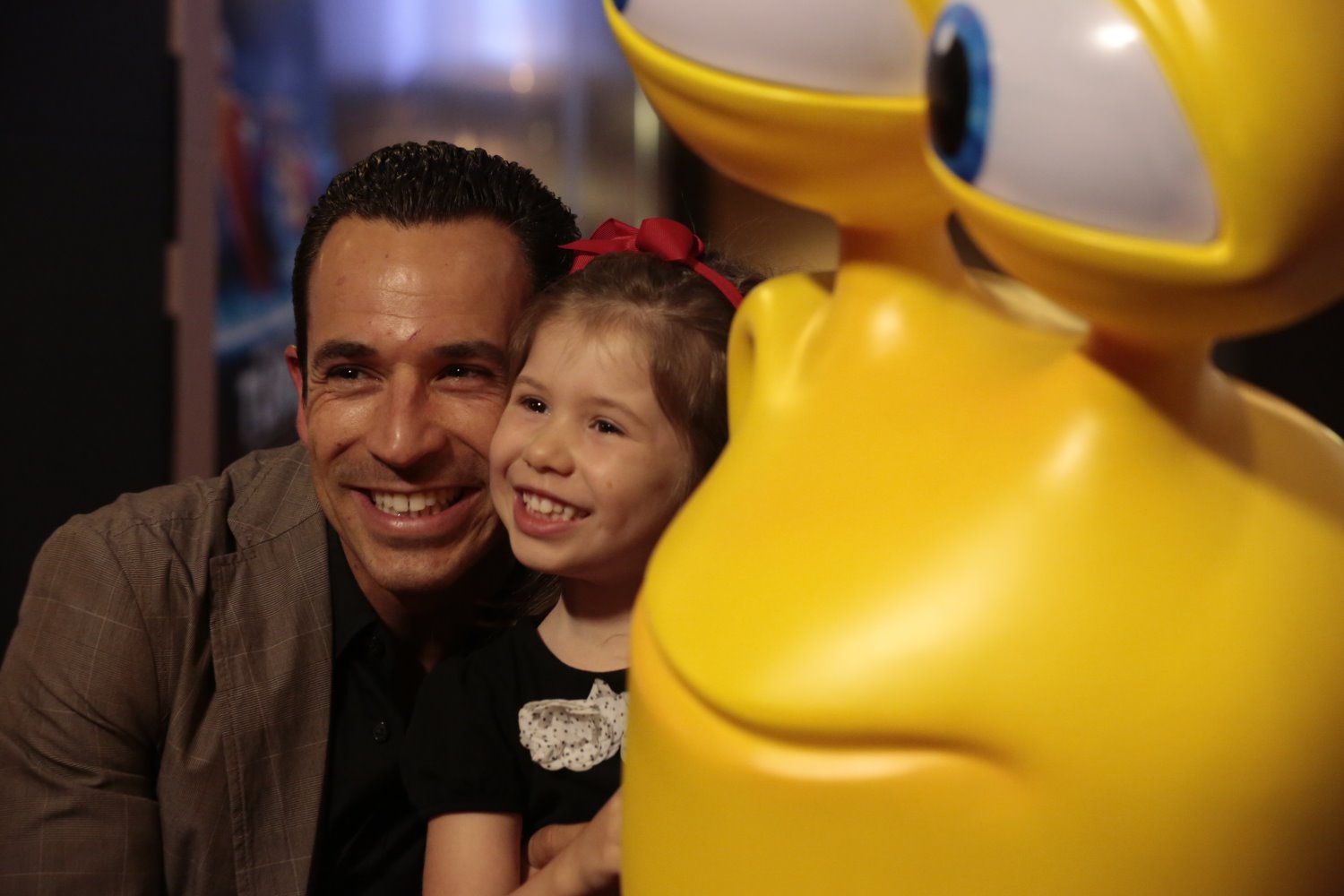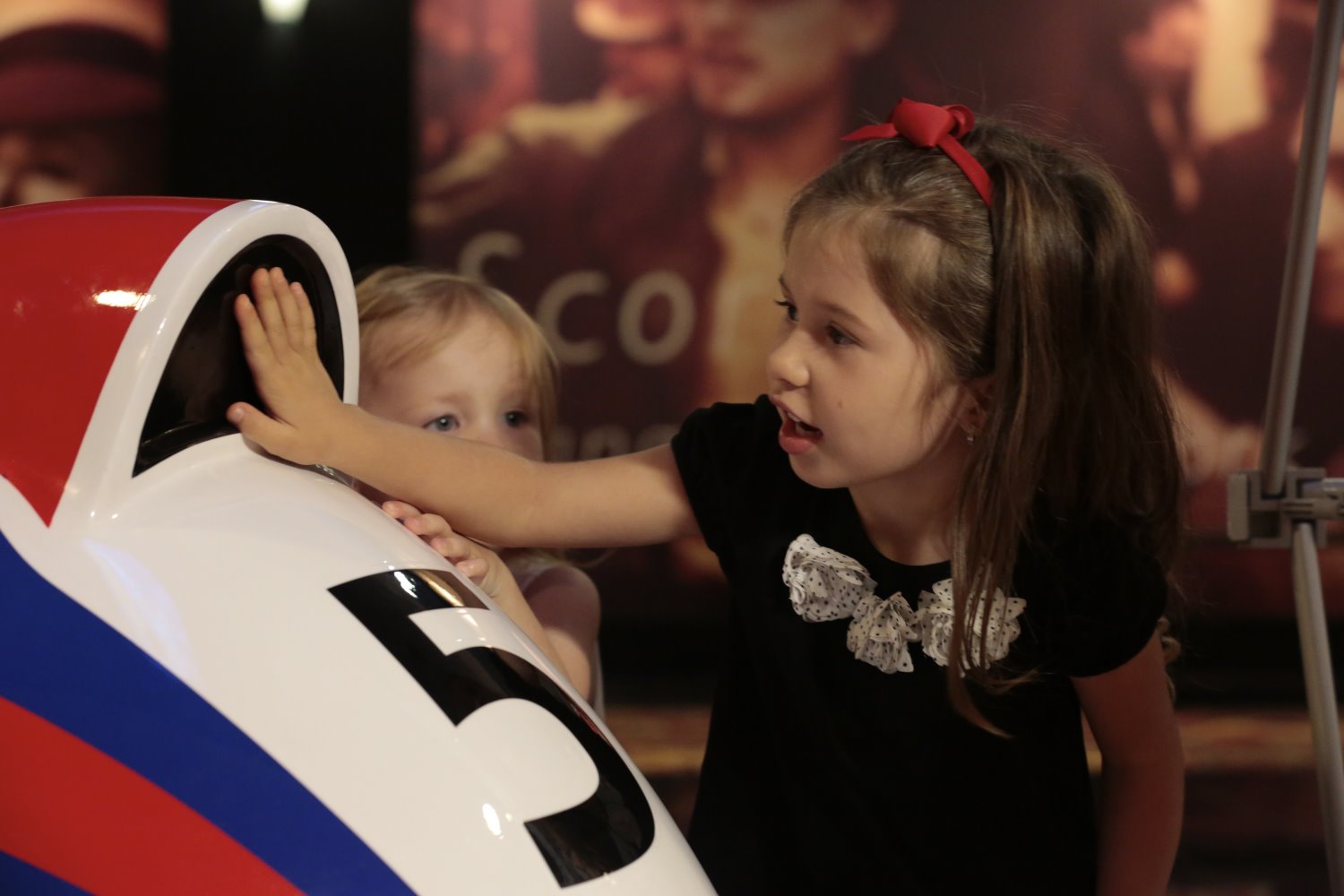To capitalize on ‘Turbo’, the heavy lifting has just begun
 |
| Turbo's a pretty cute snail |
It's finally here.
After months of build-up and energetic promotion, the long-awaited debut of Turbo has finally arrived. The DreamWorks Animations film, which tells the story of a garden snail, who dreams of winning the Indianapolis 500 debuted in theaters across the country Wednesday.
Generally speaking, it seems Turbo, which former INDYCAR CEO Randy Bernard was instrumental in bringing about, has been well received. Sure, I have seen some reviews that point out the movie isn’t entirely kid-friendly as it shows crows sweeping in to attack snails. I've also seen some box-office projections indicating Turbo may turn out to be something of a disappointment relative to expectations. The LA Times, for example, noted that Turbo could be negatively affected “by this year's glut of summer movies." We should know more regarding the film’s box office performance Monday.
However, I’m not exactly sure to what extent the film’s box-office performance relative to industry expectations means regarding the primary concern of those reading this column: Turbo’s impact on IndyCar.
Also, when it comes to analysis of matters such as plotline, character development, special effects, animation, etc., that can be found elsewhere. What the animated garden snail, and his dream of winning the Indy 500 means for the sport of Indy car racing going forward will be the primary focus here.
Now, before moving ahead, I should note a few things. One, I attended a matinee showing of the film Thursday with my 4 year-old daughter. The crowd was good for a matinee, and from what I could tell primarily made up of people such as myself – parents, and their children.
Second, having spoken to people who review movies regularly, I was told that I should give readers the courtesy of a spoiler alert. To be clear, I am going to discuss content from the movie, presuming that readers have seen the film. Thus, if you have not seen the film, and do not want the story "spoiled," stop reading at this point.
If you're still here, let's make something very clear from the outset. Any notion that Turbo will change the fortunes of IndyCar significantly in the near-term is at best, a stretch. While IndyCar has a passionate, loyal, diehard following, it is ultimately a niche sport, which makes nary a ripple in mainstream outlets. Turbo succeeds unquestionably in introducing the sport to a younger audience. However, for a variety of reasons, the impact of Turbo will probably not be known for quite some time.
For one, the focus of the film is not IndyCar per se. Sure, IndyCar is mentioned, and so is Indy Lights. Yes, there are animated recreations of Dallara DW12s, with Will Power’s #12 Verizon car, Simon Pagenaud’s #77 HP car, and Townsend Bell’s #60 Sunoco car amongst them. These recreations were done with incredible attention to detail, and provide recognition of the cars IndyCar’s stars drive, and provided some good return for the sponsors.
But ultimately, the dreams and aspirations of Theo the snail, who becomes Turbo, are not to win the Izod IndyCar Series championship. We don't see Turbo tour the Championship Trail, to use the old USAC term. Turbo does not dream of winning Baltimore, Barber, Iowa or Milwaukee.
No, Turbo’s dream from the outset of the film centers entirely around the Indianapolis 500. And when it comes to showcasing the Indianapolis Motor Speedway as hallowed racing ground and the Indianapolis 500 as racing's hallmark event, DreamWorks Animations hit a home run for IndyCar with Turbo.
 |
| Will Turbo win over a new generation of fans for IndyCar? |
See, a generation of young people have come of age during a time, in which the Indianapolis 500 is not unimportant, but certainly lacking in the prestige and prominence it had a generation ago. We’ve seen this as the month of May has dwindled to a couple of weeks, and events such as Pole Day and Bump Day, carry nowhere near the significance they once did. Sure, the race attendance has made a comeback in recent years, and Carb Day has been intelligently tweaked.
Still, I don’t think I’m saying anything controversial in noting the month of May, and the Indy 500 are not what they once were.
Where Turbo succeeds on no uncertain terms is in making the Indianapolis Motor Speedway a destination and winning the Indianapolis 500 a dream to which Turbo aspires. Further, the film successfully lures the audience into investing in Turbo’s dream.
The first way this is done, is Turbo, his human friend Tito, and their friends decide to travel across the country to the Indianapolis Motor Speedway. Both Tito and Turbo make the long trip, ignoring the advice of their more pragmatic brothers. Tito’s brother Angelo and Turbo’s brother Chet each dismiss their siblings as irrational, lunatic dreamers.
But Turbo and Tito insist on chasing the dream, and the place (Indianapolis Motor Speedway) and event (Indianapolis 500) where those dreams are made. There is build-up during their trek across the country with signs saying Indianapolis. There is also a sign when the group nears the Speedway saying “Indianapolis 500: Memorial Day Weekend." The Speedway is the place, the Indy 500 the event, and Memorial Day Weekend the time, when Turbo will chase his dream. DreamWorks does a fabulous job of building the anticipation as Turbo and company near The Speedway.
And when they arrive, IMS looks glorious. The attention to detail is stunning, an the sense of anticipation further enhanced as Tito, Turbo and the group go under the tunnel on the front stretch and come out the other side in Gasoline Alley.
Of course, being there isn’t enough for Turbo. Like any racer, he wants to win and to do so he must defeat Guy Gagne, the finest racer of his day. Gagne, it should be noted is regarded as the best racer of his day, because of his success at Indianapolis.
Again, the film succeeds unquestionably with this powerful imagery. Gagne became a superstar by winning at Indy, drinking the milk, wearing the wreath, and adding his likeness to the Borg-Warner Trophy. The film introduces a young audience to all this pageantry surrounding the 500, which readers of this space are familiar with, but the public-at-large may not know as well.
Turbo's dreams, of course, center around these powerful images. He dreams about crossing the “Yard of Bricks," first, drinking the milk, and adding his likeness to the Borg-Warner Trophy. He ultimately does.
The question becomes, what does IndyCar do with it?
Well, taking a cue from the movie, human stories need to be told. Let me explain.
There was applause in the theater when Turbo won the Indianapolis 500. My daughter even turned to me and said “Turbo won, Turbo won." The audience, many of whom I presume have no particular investment in racing applauded, because, they had an investment in Turbo.
They saw the snail’s humble beginnings. They saw how Theo dreamed of being something more than a snail, who battles everyday so he can just survive and continue his mundane existence. They see him catch a lucky break, when he is given nitrous oxide, and the ability to travel over 200 miler-per-hour. They see him capitalize on his break, in spite of the warnings of others, and ridicule of a snail racing at Indy (didn’t check where that fits in the rules).
Simply put, Turbo, even though he isn’t human, represents a triumph of the human spirit, a very simple narrative the audience identifies with.
What a large audience is not identifying with are the drivers of modern Indy cars. Whether this is a marketing matter, a relevance matter, etc., is hard to discern. But that doesn't mean there are not stories of such triumph in IndyCar.
Remember, reigning series champion Ryan Hunter-Reay has in the past noted that he seriously considered giving up racing, as he was out of Indy cars for all of 2006. Like Turbo, Hunter-Reay continued ignored the advice of others, and continued pursuing his dream, despite long odds.
Like Turbo, Indianapolis 500 champion Tony Kanaan chased his dream against long odds. Kanaan famously slept on the garage floor of the race shop during his days in the junior formulae. He did not allow inconvenience or hardship to deter him.
While I can go on in this vain for hours, there are many stories like this in IndyCar. Charlie Kimball, for example, races at the top-level despite having diabetes.
These stories need to be told to a larger audience than they have been. The youngsters at Turbo did identify with the victor in the race. They also now have been exposed to Gasoline Alley, The Yard of Bricks, the winner's sip of milk, and the Borg-Warner Trophy. And those images were enough in their mind to validate Turbo's success.
 |
| Turbo cracked open the gate for IndyCar to win over a new generation of fans |
In other words, DreamWorks Animation succeeded on no uncertain terms, in establishing IMS as the place; Memorial Day Weekend as the time; crossing the Yard of Bricks first as the destination, sipping the milk and adding one's likeness to the Borg-Warner Trophy as the validation. Those impressions have been firmly established in the minds of the young people, who have gone to the theater to see Turbo.
However, if those young people have no Turbo to root for at Indianapolis, all the imagery, and detailed animation will be in vain. Yes, Turbo painted IndyCar in a positive light. Yes, IndyCar's most sacred cathedral was displayed immaculately. Yes, Turbo, has laid the groundwork for IndyCar to reach a younger audience.
But a magic bullet Turbo is not. No, the heavy lifting has just begun.
Brian Carroccio is an IndyCar Columnist for AutoRacing1.com. He can be contacted via email at BrianC@autoracing1.com.
